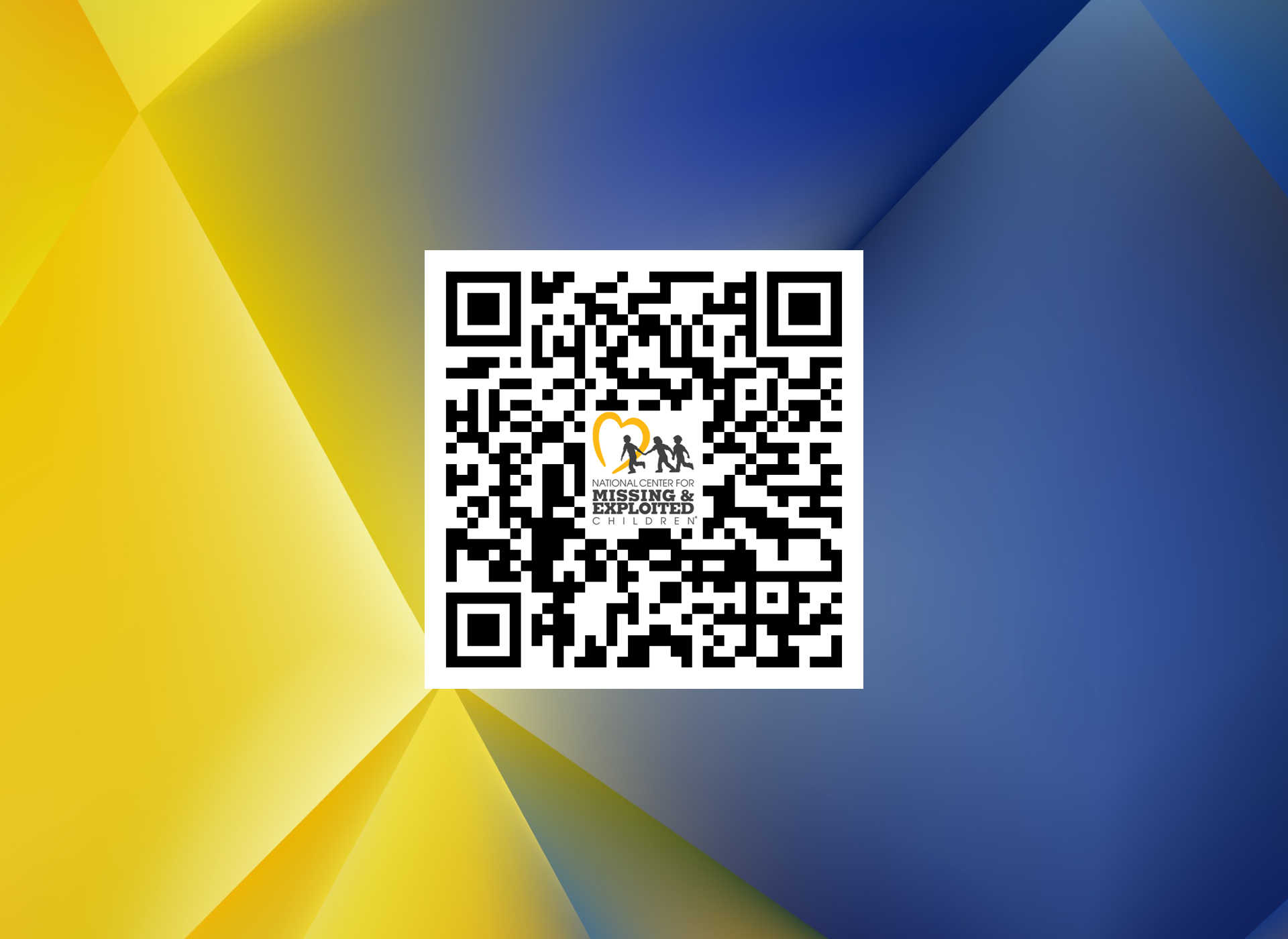New Posters, QR Code to Help Find Missing Kids
Scan the QR code in the photo above with your phone, and you’ll see photos of missing children in a 50-mile radius of where you are right now.
It has the potential to revolutionize the way we search for missing kids.
In the nearly 40 years since the National Center for Missing & Exploited Children (NCMEC) was founded, we’ve helped law enforcement recover more than 400,000 missing children. Photos have consistently been the most powerful tool we have to bring them home. But what has changed is how quickly we can get those photos of missing children to people in the best position to help find them.
From the early days of putting children’s photos on milk cartons, technology has continually evolved to help us distribute literally billions of photos faster and faster – using emails, billboards, mobile devices, social media, and even gas station TVs. We can geo-target posters to specific areas where a child went missing or is believed to be now. But the QR code could usher in a whole new era. Now we’re talking a matter of seconds – and not just one child at a time.
“Instead of sharing one missing child poster, this will allow the public to view all missing children in their immediate area, whether they're at home, visiting friends, or on vacation," said John Bischoff, who oversees our Missing Children Division. “More images will be seen, and, hopefully, more children will be found quickly.”

John Bischoff holding the new QR code (photo by Sarah Baker)
The new QR code is part of exciting new changes – several years in the making – that we’re debuting today to enhance the search for missing children, including a redesign of the posters themselves. The goal was to make it easier for the public to quickly see key information and understand how they can help – by scanning the QR code, sharing the posters on social media, or reporting tips or sightings.
We wanted to use larger photos of missing children by eliminating extraneous details, including date of birth when the child’s age is sufficient. But we’re not marketing experts; our original “Missing” posters were created through a law-enforcement lens and focused on print versions. People today are constantly bombarded with images and information, and we needed help discerning how we could break through all the noise and better capture the public’s attention. We needed a research-based approach.
A class of graduate marketing students at Georgetown University’s McDonough School of Business jumped at the chance to help us.
In the fall of 2020, as the country was in the throes of the pandemic, Rebecca Hamilton, a professor of marketing at Georgetown, gave her class of second-year MBA students three options for a class project. Without hesitation, she said, they wanted to help NCMEC, a chance to have a real impact.

Mobile posters
Hamilton’s class first ventured out to Walmart stores throughout the Washington, D.C. area. Walmart has been a longtime partner of NCMEC’s and regularly prints out missing children posters and displays them in their stores. The students wanted to see how the public was engaging with the posters.
They then took a more scientific approach, using a software program called Qualtrics, a type of eye-tracking technology that creates heat maps showing what people are drawn to in an image. Volunteers click with a mouse those things they look at first.
“People are drawn to the face and want to help this child,” Hamilton said.
Her students also saw a need to make the photos of children larger, yet sometimes numerous photos are needed on missing posters – more than one missing child, suspects, age progressions. The class proposed three different models that could be specifically designed for mobile devices, laptops, and print posters, with both horizontal and vertical scroll features and photos nearly twice as large in the print version. To help the public better understand what to do with the QR code on a poster, they suggested encasing it in the outline of a cell phone with precise instructions.

Desktop and laptop posters

Printable posters
For their final exam, her students presented their findings to NCMEC, which incorporated many of their suggestions.
“It was such a great experience,” said Hamilton. “The fact that they could actually make an impact. This is something that led to real changes.”
For now, the QR code can be found on our NCMEC website at www.missingkids.org. Click on “get help” and then “search for missing children.” That’s where you’ll see our newly designed missing posters and a “Search Near Me” button.
Our nonprofit organization will now look for public places to post our QR code and for companies that will put it on their products. The possibilities are endless: water bottles, fast-food bags, even back on milk cartons! It could be displayed in cabs, airports, convenience stores, libraries. Anywhere people can easily see it.
One of the most exciting aspects of a missing kids QR code is that it has no expiration date. It will be instantly updated at NCMEC and never needs to be replaced. Photos of children who’ve been recovered will quickly be removed and new missing children will be added.
“We know the public is eager to help find missing children,” said Bischoff. “We want to make it much easier for them to do just that. Our goal with this technical transformation is to put information literally in their hands – on their smartphones.”
(Please reach out to Marita Rodriguez at mrodriguez@ncmec.org to partner with NCMEC to help find missing children.)
